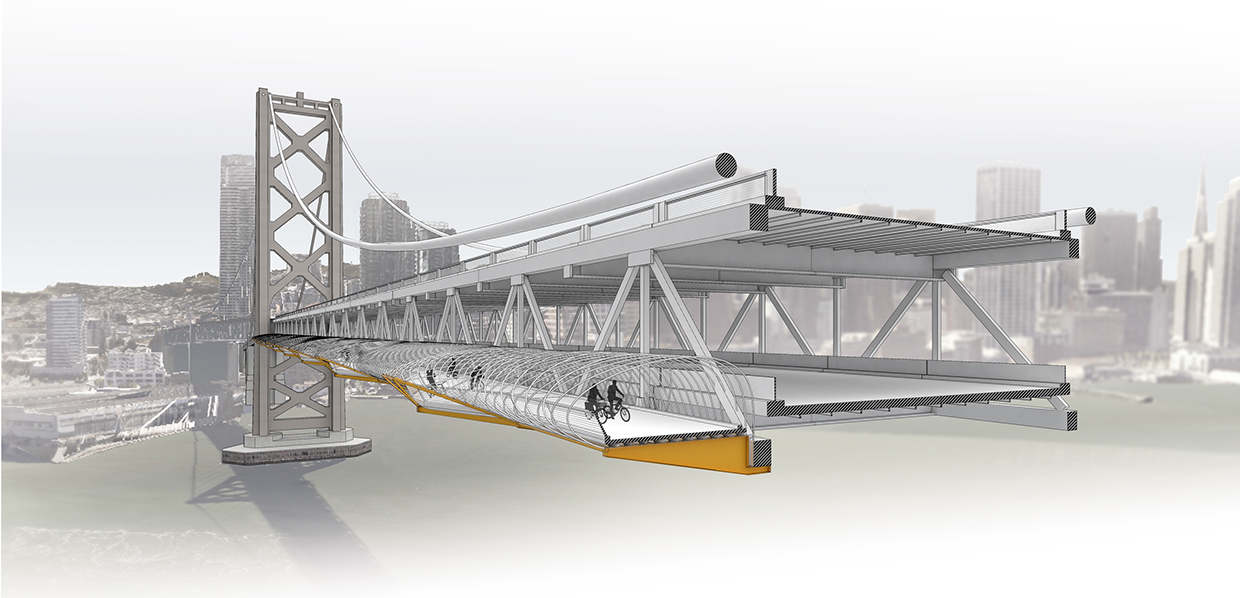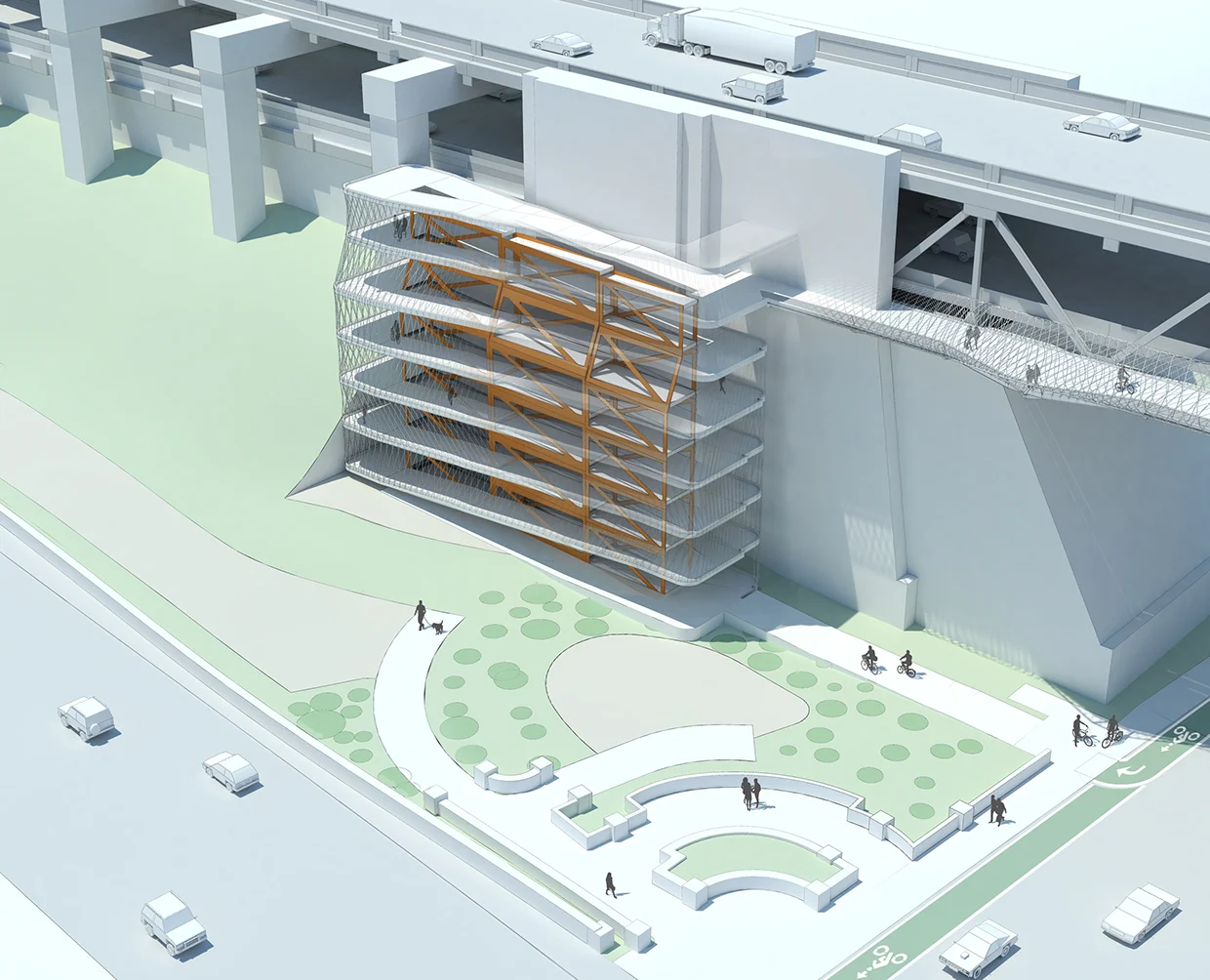






SAN FRANCISCO, CA - Despite the fact that San Francisco prides itself on being one of the world’s great bicycle cities, its Achilles heel remains the Bay Bridge; cyclists from Oakland and points east can cross only halfway, where the bike path terminates at Treasure Island in the middle of the bay. While several studies over the past 20 years have tried to find a solution to this impasse and connect the gap at the bridge’s western span, they have been stalled by untenable cost projections, intractable technical challenges, and contentious transportation policies.

Our new proposal for the West Span Bikeway -- dubbed “The Veloplex” -- attempts to rewrite the script of the Bay Bridge’s bicycle infrastructure: if not solving the problems definitively, we hope at least to rekindle public dialogue and spark our collective imagination about what may be possible. We have a challenging problem to solve, but just as importantly an exciting opportunity to imagine what new forms of infrastructure might emerge.
We begin with a simple question: what would an urban transportation complex designed for the bicycle entail? This proposal envisions a new element of bicycle infrastructure with two basic components: a bike pathway hung from the side of the bridge’s lower traffic deck, and a spiraling tower structure that links to city streets below.

The proposed bikeway departs from previous schemes for the bridge in several significant ways. A second bridge deck proposed by CALTRANS for maintenance purposes has been eliminated in order to separate budget priorities. While maintenance concerns are certainly of critical importance, their budgets and implementation should be considered separately from bicycle infrastructure, if nothing else to provide the public with accurate projections of cost burdens.
In order to minimize wind loading the bicycle lanes would be located on the south-east side only -- as a single two-way path -- and lowered to align with the bottom of the main traffic deck. This would allow the bulk of the existing bridge to block most of the prevailing winds from the north and west, thereby avoiding the significant structural costs of previous schemes to mitigate increased wind loads, not to mention making it safer for cyclists in blustry weather.

A tensile lattice around the deck provides additional structural stiffness while reducing weight and material, minimizing turbulence much like an airplane wing does, while serving as safety barrier. To mitigate the asymmetric loading of a single deck – and torsional forces on the bridge itself – composite materials for the tensile lattice dramatically reduce the weight versus more conventional steel cantilevered structures.
This meshwork forms an elegant gossamer web along the bridge’s leading edge, forming a new decorative band to face the city’s burgeoning southern waterfront districts.

At its San Francisco end the deck terminates in a seven-story tower -- the Veloplex itself -- that spirals down to street level. Distinct from the large off-ramp structures common in other proposals, this structure occupies a very small footprint, further improving its economic viability. Capturing underutilized lots such as this not only avoids land use conflicts but also frees up other CalTRANS parcels for sale or lease, thereby helping to offset project costs.
Located on a steep, unbuildable lot on Beale Street at the south-eastern side of the bridge, the Veloplex provides a critical link between the proposed new bike lane and the city street fabric below. Occupying a narrow sliver of land between an existing dog park and the concrete caisson of the bridge itself, the 25-foot-wide structure backs into the steep slope and allows easy access to downtown, the TransBay transportation hub, and China Basin, while steering clear of primary vehicular routes on and off the bridge proper.
A wheelchair accessible and ADA-compliant concrete ramp wraps around a steel braced-frame core. A tensile mesh of steel cables -- not dissimilar from the suspension cables of the bridge itself -- helps to support the ramps’ outer edges, and provides the ancillary effect of a gossamer web around the entire structure. LED lights are placed at each intersection of the cable mesh and at night become a delicate constellation, extending Leo Villereal’s “City Lights” installation on the bridge itself.
